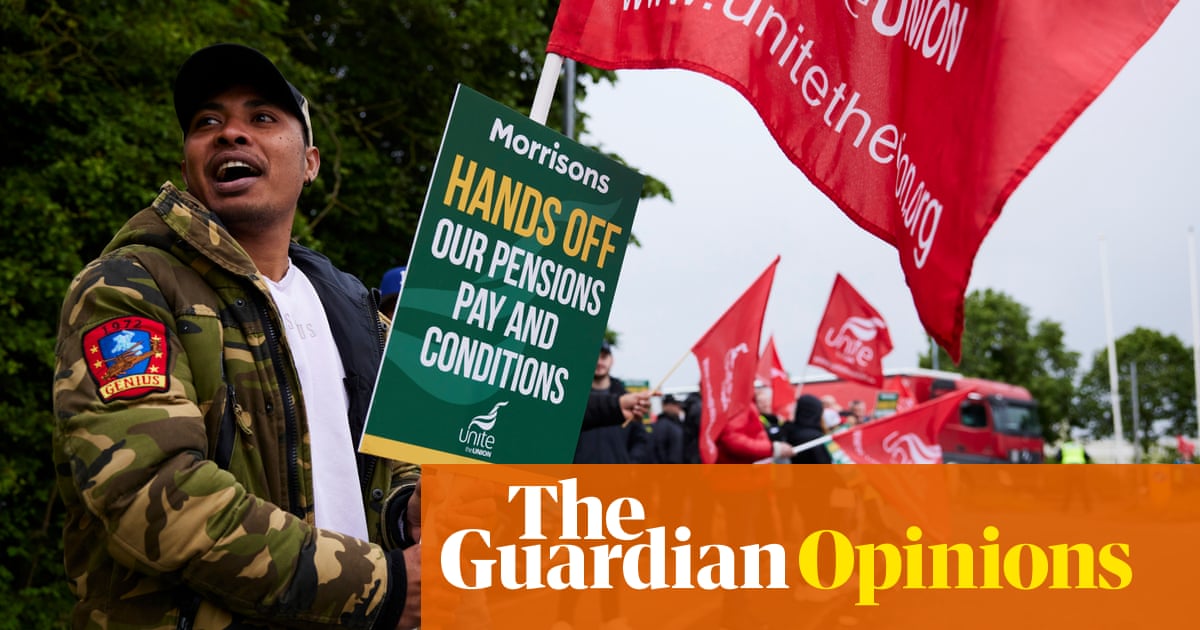Our economy is broken. Our public services are in crisis, from the NHS to the dozens of local councils facing bankruptcy. Our industries are in crisis as infrastructure collapses, from transport and water to the electricity grid. From Port Talbot to Aberdeen, tens of thousands of workers face job cuts from an unjust “transition to net zero”.
And, as the prime minister, Keir Starmer, has noticed, behind this economic failure looms an even bigger societal black hole. Last month’s riots were a warning sign. If you kill hope, if you abandon working-class communities, you create an open wound of discontent that the scapegoaters will stick their fingers in. This is how support for rightwing nationalism grows.
So a great deal hinges on the choices we make today. The UK is still a £2.7tn economy, the sixth largest in the world. The money is there for all of us to have decent living standards. We have choices about how we distribute this wealth. It is a choice to stick with the grim old austerity model, to pit pensioners against workers by axing the winter fuel payment when public wages rise. The new government can seize its moment and make entirely different choices.
It is not hard to point to the immediate causes of economic stagnation. One is austerity: lost years of public-service cuts under the previous Conservative government. We should not be surprised that slashing essential services creates harm. University of Glasgow academics have linked austerity to more than 330,000 deaths in the 2010s. Austerity also shrinks economic growth. According to one calculation, by 2018 GDP was nearly 16% less than it would have been without George Osborne’s cuts.
But there’s another, longer-running issue: chronic underinvestment. The UK has the lowest investment rates of the G7 advanced economies. We are failing in both private investment by businesses and public investment by the government. Since 2000, our average public investment rate has been just 2.5%, compared with 3.7% across OECD countries. As the Resolution Foundation shows, this means we have built up a public underinvestment gap of more than £500bn. The Financial Times’s 2024 new year survey of 100 economists found a resounding consensus: we need “investment, investment, investment”.
If you are an incoming Labour government with a huge majority and a mission for economic renewal, all the evidence points to two basic lessons. First, don’t impose a new round of austerity cuts. Second, invest.
Here are two choices the government could make today. First, tax the super-rich to restore public services. It is obscene that 50 families in the UK now own more wealth than half the country, about 33 million people. This is why Unite proposes a 1% wealth tax on the net assets of the richest 1%, which alone would raise £25bn a year. Alongside other measures, including taxing corporations’ excess profits, we’d have the money to restore vital services. And we’d start to tackle the grotesque inequality that is poisoning our society.
The second choice is to borrow to boost public investment. The evidence shows that major investment drives require government to act as the “investor of first resort”. Unite supports leading economists’ calls to increase public investment by at least 1% of GDP. In fact, this should be a minimum.
There is no getting away from this: without a step up in public investment, we will not manage to rebuild our industries and ensure a genuine workers’ transition to net zero. For example, Unite’s research shows we need investment of £6.6bn in the next five years to build a domestic wind manufacturing industry and create new jobs for North Sea communities. The oil companies are not providing this investment. So the government must take the lead.
This means jettisoning the straitjacket fiscal rules on borrowing. The chancellor, Rachel Reeves, has said she will stick with the previous government’s rule: that the debt-to-GDP ratio should be forecast to fall in five years. Reeves argues we need to get growth up, and so the debt ratio down, before we can borrow to invest. The big problem is, without investment you’re not likely to see growth. As Mariana Mazzucato, the economist who inspired Labour’s “mission-led” approach, writes, this is “like waiting for your car to start moving before putting in fuel”. Others point to research by the Office for Budget Responsibility that shows raising public investment by 1% of GDP could provide a long-term boost of 2.5%. In short, it would pay itself back in spades.
Labour must now decide whose side it is on. Some commentators talk about the need for tough choices, but in truth they just mean cuts – a doom-laden road to nowhere. We can’t just keep doing the same thing and expect different results. A return to austerity will simply deliver more misery and division. It will blight working-class communities the most and be a gift to the far right, fostering yet more anger and disillusion with the political process.
That approach is not just wrong, it is dangerous. It is time the government grasped the nettle and asked those who have profited most from decades of deregulation and privatisation to now help pay to rebuild Britain.
